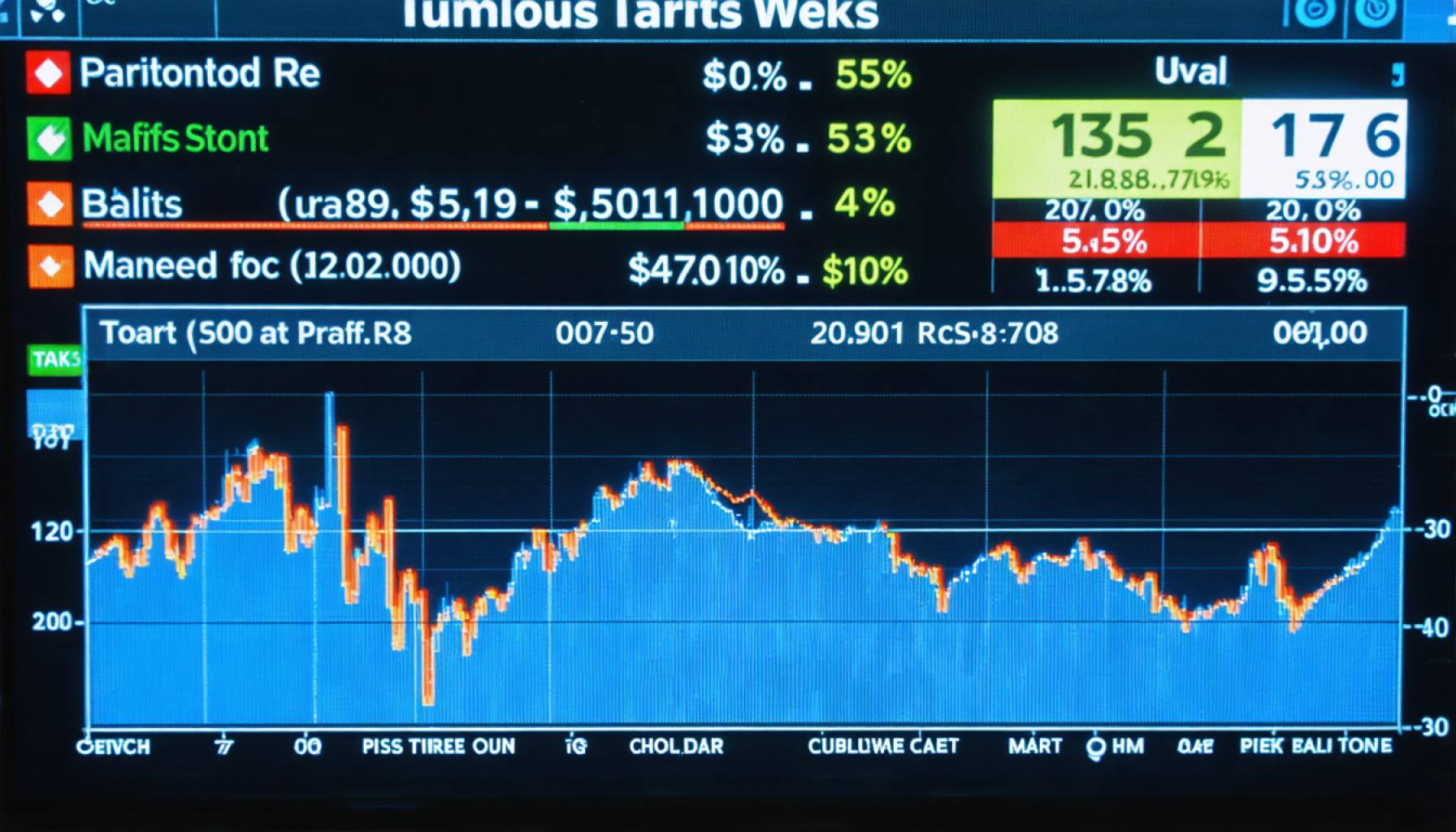
- The stock market experienced a significant downturn, primarily due to new tariffs announced by the U.S. government.
- Investor confidence wavered as the prospect of international trade conflicts overshadowed market stability.
- Federal Reserve Chair Jerome Powell’s reassurances about the U.S. economy aimed to calm fears, but uncertainties lingered.
- Tariffs, while intended to balance global economics, threaten to disrupt consumer prices and everyday expenses.
- The situation highlights the importance of stability and clear communication in economic policy.
- The interconnectivity of global commerce implies broad impacts from policy changes beyond stock market fluctuations.
- These events underscore how the market relies heavily on predictability and trust.
- Reflection on the week’s events may influence future strategies in global trade and economic policy.
The heart of America’s financial world quivered yet again this week as the stock market took a sharp dive, echoing the silence that follows a thunderous clap. Traders in sleek suits scurried across the bustling floor of Wall Street, their eyes fixed on the fluctuating numbers that seemed to be racing against reason. The chaos, once again, can be traced back to the powerful punch of tariffs announced by the U.S. government.
Within the grand halls of finance, the day started with a foreboding calm. Investors, honed in the art of anticipation, watched as whispers of economic policy changes transformed into a tangible storm. As the details of the tariffs unfurled, fear seeped into the trading minds, like ink spreading across a page. The tariffs, aimed at leveling the global economic playing field, instead tilted the delicate balance of investor confidence.
The Federal Reserve Chair, Jerome Powell, attempted to steady the ship amidst this financial maelstrom. His assurances about the resilience of the American economy, articulated with the clarity and authority his position commands, were intended to bring solace to the jittery market. Nevertheless, the stark reality of potential international trade conflicts cast long shadows over his optimistic outlook.
Beyond the polished doors of trading houses, the broader implications of these tariffs ripple through the lives of everyday citizens. As goods caught in the crossfire of these trade skirmishes become dearer, the average consumer might soon feel the pinch in their wallets. The interconnected world of modern commerce means that such economic policies have a reach far beyond the numbers tumbling on electronic boards.
In this complex dance of interests and international diplomacy, the true power of tariffs lies not just in their immediate impact but also in the chain reaction they set off. The unpredictability of the market stood as a testament to how delicate the balance is, and how easily it can be disrupted.
The key takeaway from this tumultuous period is the vital importance of stability and clear communication in the sphere of economic policy. As history reminds us, in the theater of finance, confidence can be as fragile as it is forceful. The modern market, while resilient, thrives on predictability and trust. These tectonic shifts serve as a reminder of the enduring strength and fragility of the global economic network.
As the dust settles on this week, investors and analysts alike are left to ponder—what lessons can be drawn from these events, and how will they shape the future of global trade and economic policy?
How Tariffs Are Unsettling Global Markets: Insights and Implications
Understanding the Recent Stock Market Turmoil
The stock market’s recent volatility, driven by U.S. government tariffs, highlights the intricate interplay between geopolitical decisions and economic stability. While the aim of these tariffs is to create a level playing field in global trade, the immediate repercussions have been destabilizing for markets and consumers alike.
Key Insights and Analysis
1. Economic Implications of Tariffs
Tariffs are essentially taxes imposed on imported goods. They can lead to higher prices for consumers as businesses pass on the costs. This can reduce consumer spending, which is a critical component of economic growth. According to a study by the National Bureau of Economic Research, past tariffs have led to significant price increases in affected industries.
2. Impact on Global Supply Chains
Modern businesses rely heavily on global supply chains, meaning that the effects of tariffs can reverberate internationally. Disruptions can lead to delays and shortages, ultimately hurting both businesses and consumers. Companies often face increased costs and operational headaches, needing to find alternative suppliers or routes.
3. Investor Reactions and Market Volatility
When tariffs are announced, fear and uncertainty can lead to rapid sell-offs in stock markets. Investors seek safety, often moving to more stable assets like gold or bonds. This ‘flight to safety’ can cause sharp market dives, as seen recently.
4. Federal Reserve’s Role
Federal Reserve Chair Jerome Powell’s efforts to calm the markets underscore the importance of clear communication. The Fed can influence confidence with monetary policy signals, such as adjusting interest rates, but it must walk a fine line to avoid further market agitation.
5. Real-World Consumer Impact
For everyday citizens, tariffs can mean higher prices on common goods, from electronics to produce. Consumers may need to adjust spending habits, increasing the economic stress on households, especially those already struggling.
Controversies & Limitations
– Debate on Economic Protectionism: While some argue tariffs protect domestic jobs, others warn they can trigger retaliatory actions, harming exporters.
– Short-term vs. Long-term Effects: Immediate market shakiness contrasts with potential longer-term benefits debates on the strategic necessity of tariffs continue in academic and policy circles.
How-To Steps for Navigating Tariff-Induced Market Changes
1. Diversify Investments: Reduce exposure to any single market or industry.
2. Stay Informed: Pay attention to policy announcements and market analyses.
3. Consider Safe Havens: Assets like gold or government bonds can provide stability.
Future Predictions and Trends
– Trade Negotiations: Watch for shifts in international trade agreements, which could ease or exacerbate market tensions.
– Tech and Innovation: Sectors less reliant on tangible supply chains might see growth as attention turns away from goods subject to tariffs.
– Policy Adjustments: Governments might explore multilateral trade solutions to avoid unilateral tariff decisions.
Actionable Recommendations
– Financial Planning: Consumers should review budgets in anticipation of potential price hikes, focusing on essential spending.
– Businesses: Companies should explore supply chain diversification to mitigate risks associated with tariffs.
For more information about economic policies and market updates, visit the Wall Street Journal.
In conclusion, while tariffs can shake markets and affect economic stability, adopting a proactive and informed approach can help navigate the challenges they present. Understanding these dynamics will help investors, businesses, and consumers alike prepare for what lies ahead in the global economic landscape.



